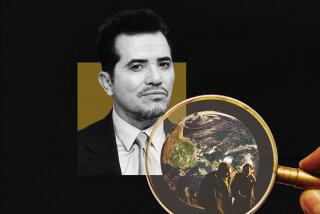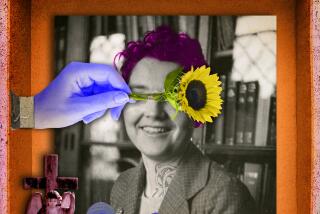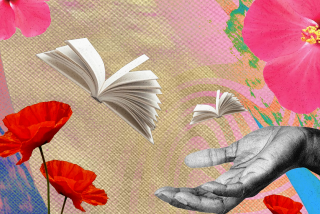FOCUS : ‘Mirror’ Reflects Tragedy, Triumph in New World
Mexican writer Carlos Fuentes has produced his own celebration of the Columbus quincentennial: a five-part television series called “The Buried Mirror: Reflections on Spain and the New World.”
He wrote and narrates each one-hour segment of the series. This celebrated master of the Spanish language--he received the Cervantes Prize for Spanish literature from King Juan Carlos of Spain--did this series, and an accompanying illustrated book of the same title, in Spanish and English.
His theme is the rich mixture of cultures that first produced Spain, then the Spanish-settled part of the New World:
“We are Indian, black, European, but above all mixed-- mestizo . We are Iberian and Greek, Roman and Jewish, Arab, Gothic and Gypsy. Spain and the New World are centers where multiple cultures meet--centers of incorporation, not of exclusion. When we exclude, we betray ourselves. When we include, we find ourselves.”
The idea of celebrating the 500th anniversary of Christopher Columbus’ fateful landfall on Oct. 12, 1492, has not been embraced warmly by some American Indian and Chicano activists. They protested the decision by the Tournament of Roses to choose a descendant of Columbus as 1992 parade grand marshal, contending that Columbus and the Spanish conquistadors who followed him were responsible for destroying indigenous cultures.
Fuentes sees Columbus’ arrival in the Western Hemisphere not as a cultural catastrophe--though, he says, there is plenty to lament--but as a seminal event in the tragic yet triumphant history that produced a new civilization.
This culture, which runs from Madrid to Buenos Aires, from Mexico City to Los Angeles, must, the 62-year-old writer says, recognize all of its many parts. “People and their cultures perish in isolation,” he said, “but they are born or reborn in contact with . . . men and women of another culture, another creed, another race.”
The series will appear on the Discovery Channel, which is carried on many Southern California cable systems, for five nights beginning Easter night, April 19.
“Buried Mirror” will be shown in Britain on the BBC, in France, Spain and Latin America. KMEX-TV officials said they plan to present the series in Spanish at a later date this year.
Fuentes did the series, which was largely financed by Spanish investors, in association with the Smithsonian Institution. Alicia Maria Gonzalez, said the program is the centerpiece of the Smithsonian’s Quincentenary Program, of which she is director.
“The history is absolutely accurate,” said Gonzalez, a former assistant professor of anthropology at USC. “The artistic interpretation is his own. For myself, I think the series is enormously stimulating. He is a marvelous storyteller. . . . To watch him narrate a segment on location in English, and then switch so smoothly to Spanish (all without scripts in either language) was so impressive.”
Fuentes conceded in an interview in Mexico that in this 500th anniversary of Columbus’ arrival “many of us in the Spanish-speaking parts of the Americas wonder whether there is anything to celebrate,” as a glance at the Latin American republics reveals “a sense of frustrations, of dashed hopes and lost illusions.”
“Yet I believe that in spite of our economic and political troubles, we do have something to celebrate . . . and that is our cultural heritage--what we have created with the greatest joy, the greatest gravity and the greatest risk.”
It is this cultural heritage that Fuentes explores in five parts:
- A look at Spanish culture, history and art.
- How the civilizations of the New World developed.
- How the immense wealth of the New World transformed Spain and Europe, and how the arts flourished in Spain’s Golden Age.
- Spain’s colonies throw off her yoke, then struggle to achieve their own identities.
- The Modern Age and how Fuentes hopes that the New World can achieve justice and development with democracy. In this segment, Fuentes discusses Latinos in the United States, particularly the Spanish-speaking inhabitants of Los Angeles. He said multilingualism is the harbinger of a multicultural world and cited Los Angeles as its prime example.
More to Read
Sign up for Essential California
The most important California stories and recommendations in your inbox every morning.
You may occasionally receive promotional content from the Los Angeles Times.










